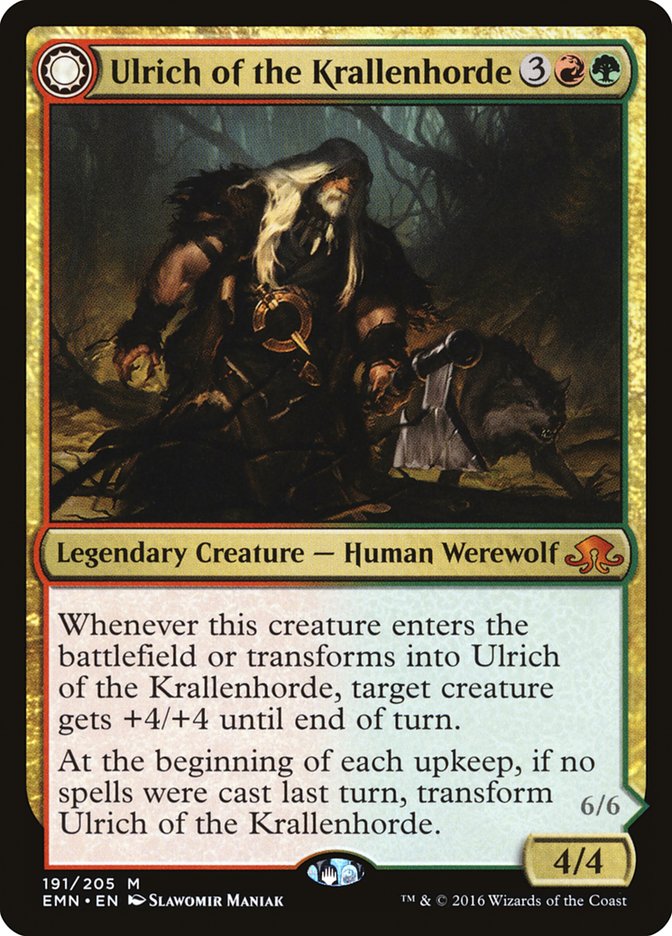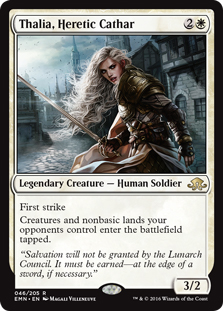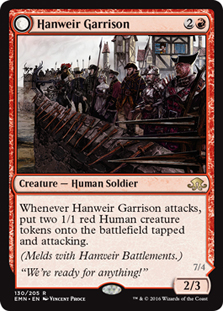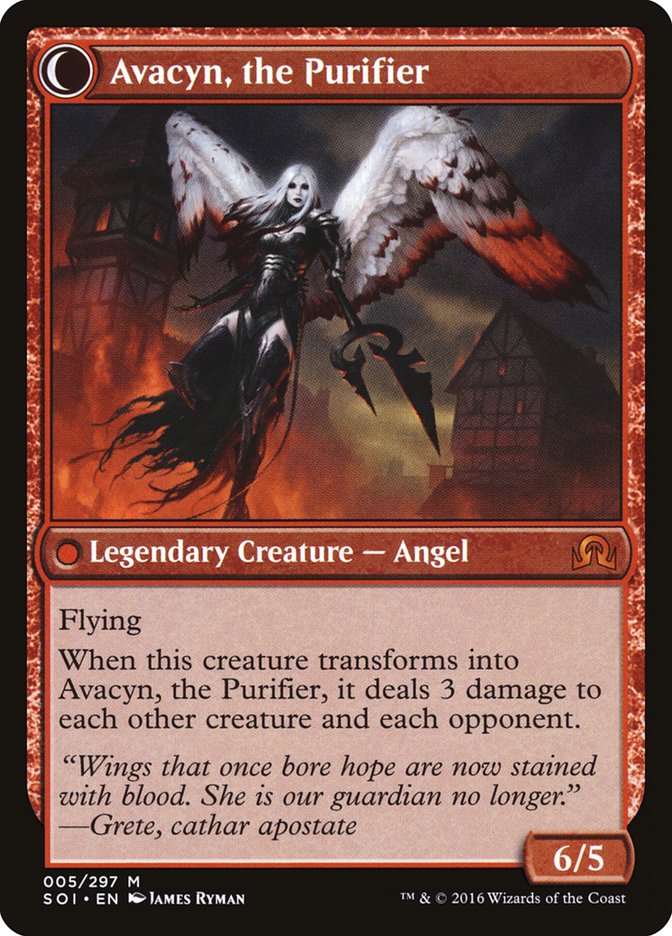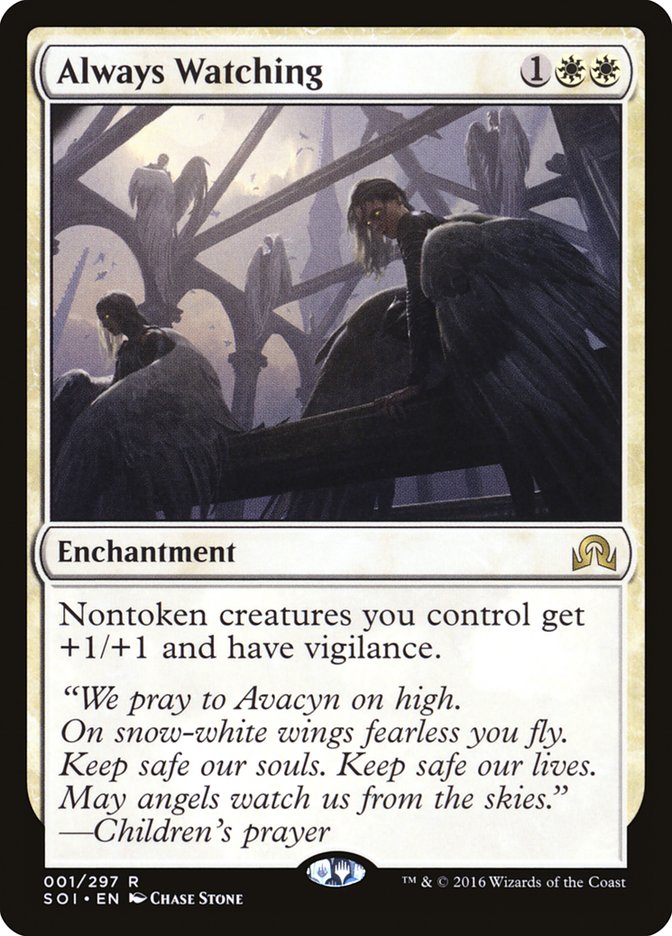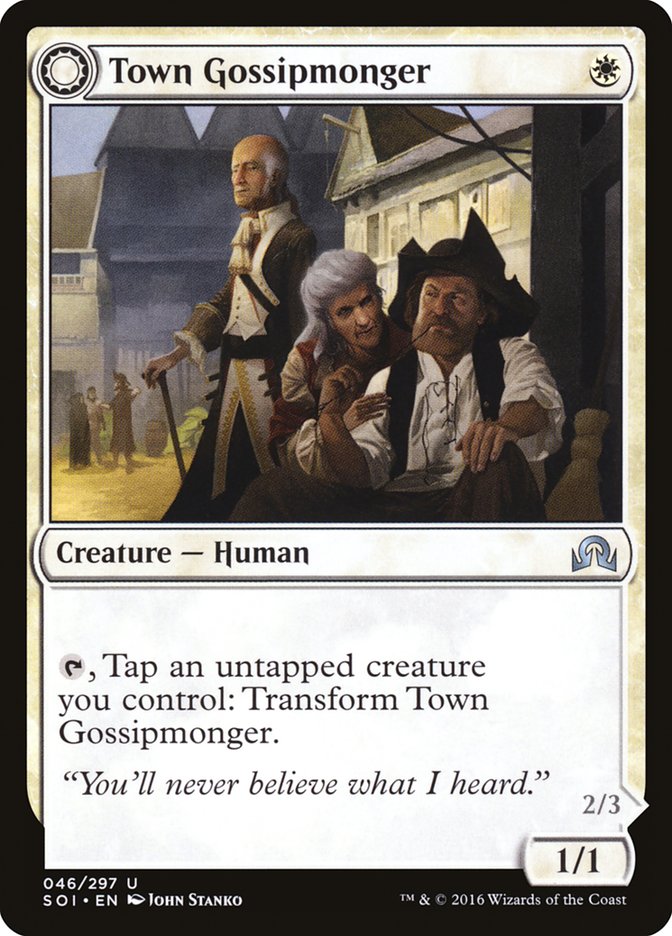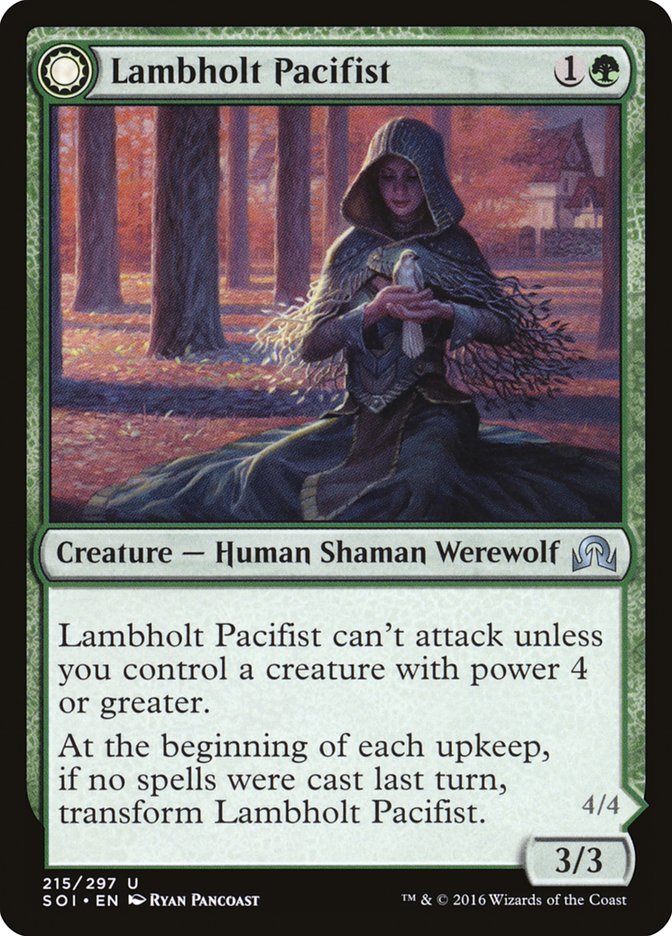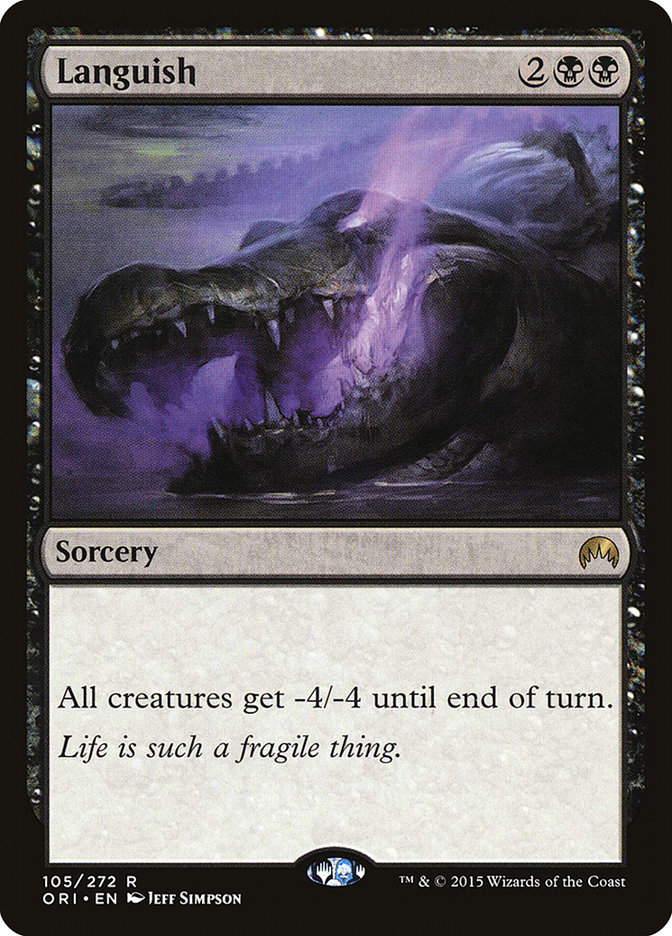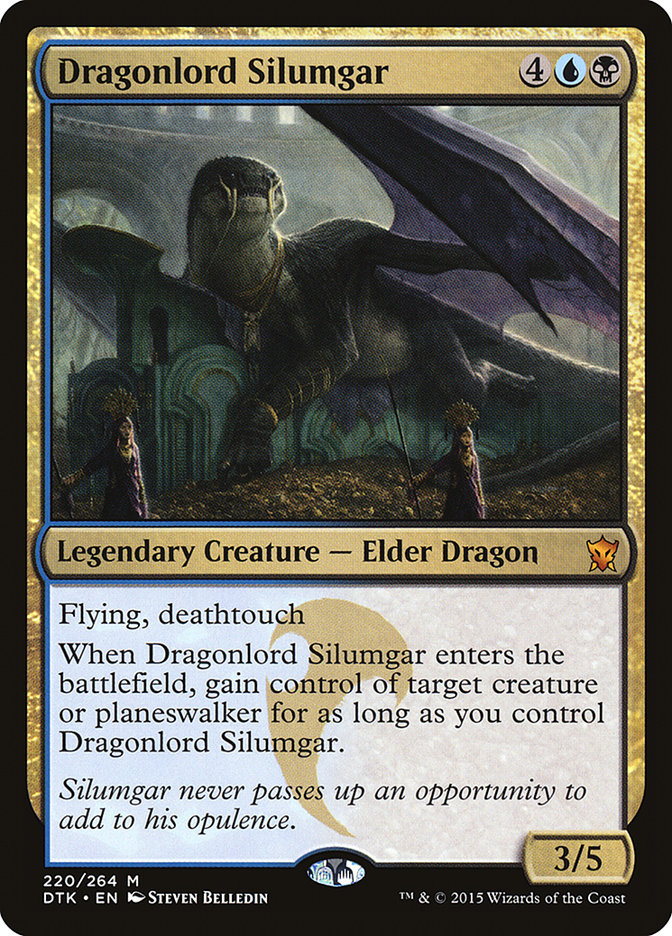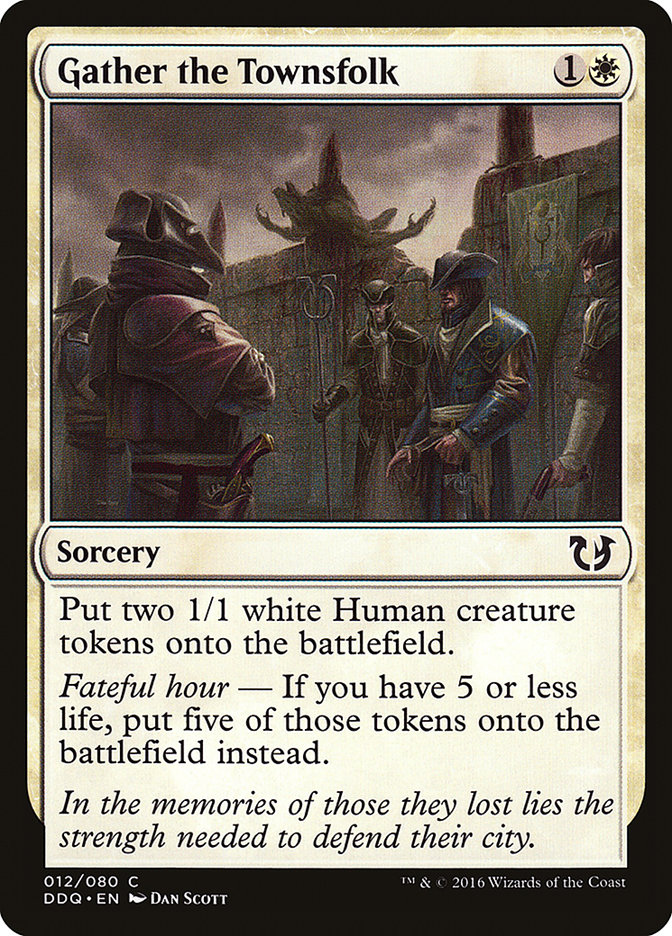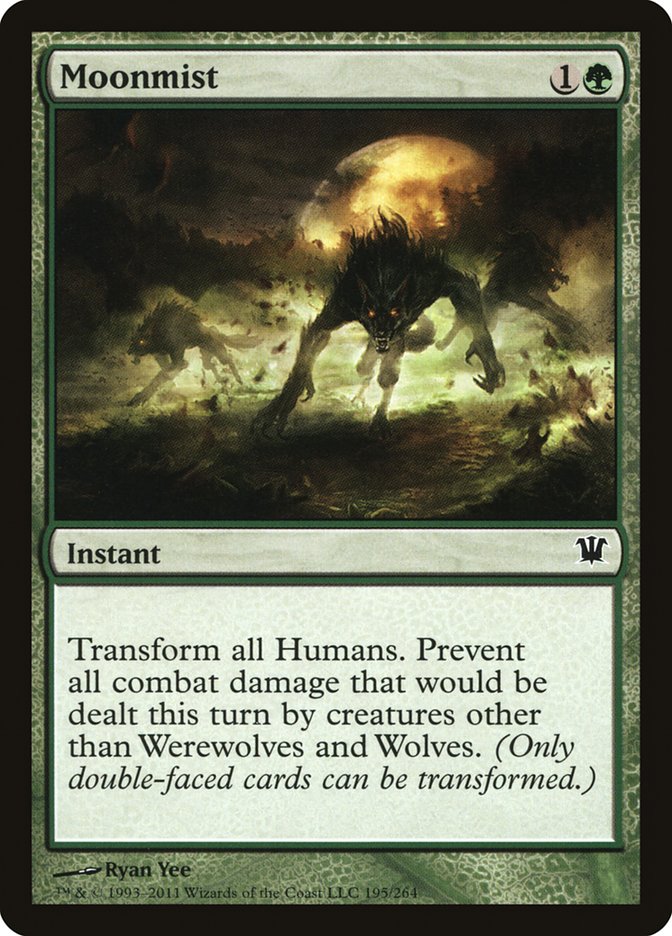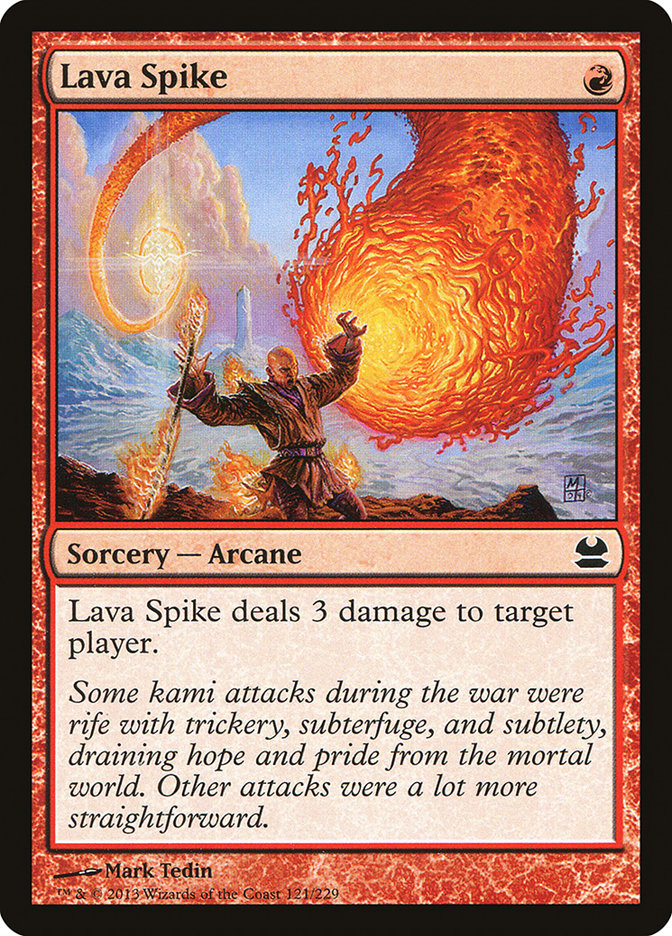Emrakul, the Promised End is a delight of a card. No, it isn’t going to be Emrakul, the Aeons Torn. They made that one to prove they could make something like it, not to make something interesting. It was barely an actual Magic card and more of an alternate win condition of “If you can cheat a creature onto the battlefield, this is as close to winning the game as we will let you get.” How many times did you see someone cast Emrakul, the Aeons Torn without tapping a colorless land for three mana or paying no mana to cast spells? Few enough that it is a story when you do so. An honest fifteen is not doable.
Emrakul, the Promised End captures all the highlights of the first Emrakul while fitting into her new flavor role and being something you actually cast. You know, an actual Magic card. I can see myself putting Emrakul, the Promised End into a normal deck of Magic cards that goes slightly out of its way to cast Dead Weight as a pseudo-ramp spell. The comparison to Ugin, the Spirit Dragon or Cruel Ultimatum is pretty accurate.
Coax from the Blind Eternities is also better than people give it credit for. Not much, as I don’t think three mana to tutor for an Eldrazi is that good, but being a blue card is a powerful ability. In the Legacy Omni-Tell deck, this is an Emrakul, the Aeons Torn that works a bit better with Dream Halls, not in the sense that you can cast the Emrakul, but in that you can discard your Coax to Dream Halls to Cunning Wish, etc. Because some of the chains through an Intuition or Cunning Wish are a little longer, every blue card counts.
Ulrich of the Krallenhorde is probably accurately rated at “not very good.” The only thing I like about the card is how it works with Den Protector, but the Durkwood Boars body is really unexciting, and transforming to fight doesn’t really feel like a good use of a turn in this Standard format where decks do so many more powerful things for five mana.
I don’t know how everyone isn’t all about this card in Modern yet. I despise the Hatebears deck, but curving Noble Hierarch into Thalia, Heretic Cathar is now just an easy nut draw that shuts people out of games. This might actually convince me to play Leonin Arbiter, or more accurately, just cut all the Arbiters from my deck and play good cards instead.
In the worst case, this is basically a four-power creature for three in red with some evasion, which is already good. On top of that, it grows quickly over time and gains extra from any wide pump effects. This card at some point in its Standard lifespan will be a premier threat; I just have doubts it will be in the next two months.
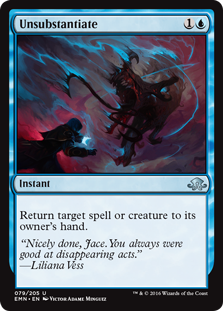
A big part of Remand’s greatness was that it was a complete freeroll. Unsubstantiate is not Remand. You can’t just play Unsubstantiate in your Esper Dragons deck to Time Walk someone at basically no cost. It’s strong in decks that just want the time, but even there it’s conditionally powerful on opponents playing expensive spells to stabilize, as the Unsummon side of the card is just overcosted. This is the actually overhyped card in the set, which is fine, because I don’t think most people quite get how absurd anything that truly can be compared to Remand would be.
Flavor Nonsense
I keep saying this, but having both halves of your legendary double-faced card on the battlefield is really stupid. Especially in this case, it feels like the two Avacyns would have a chat and come to a mutual agreement to go rogue and kill everyone, at which point you are reduced to one copy. Instead, they just kill your opponent. How can you protect and kill everyone at the same time?! It makes no sense!
This weird interaction, on the other hand, makes perfect sense. Obviously if you are Always Watching everyone, you have more to gossip and rabble about.
The fact that Lambholt Pacifist checks to see if it has four power is stupid. I really like the idea of conditional defender as a drawback for green, but come on. Maybe she just attacks because Dromoka commands it.
Yeah, I’ll just see myself out with that one.
Standard Is Great/Terrible
After a flood of Sylvan Advocates and Canopy Vistas, there have been a lot of complaints about Standard being dominated in a bad way by green and white. I’m not going to deny that those colors are clearly better than the rest, but I don’t think this is necessarily all bad.
The different G/W/x decks play out very differently. This isn’t Caw-Blade, where every version of the deck is just angling for the same mirror interactions. Bant Humans, W/R Humans, Bant Company, and G/W Tokens might sound like they all bleed together and play the same cards, but the matchups all feel unique. Bant Humans builds taller than Bant Company at the cost of immediate sticking power, W/R Humans and Bant Humans are night and day, and G/W Tokens is basically its own thing entirely with a much greater focus on battlefield position to generate planeswalker utility.
The obvious bad thing here is that it’s hard to truly play what you want. Like red cards? Yeah, good luck with that. Black cards? Kalitas, Traitor of Ghet; Languish; Ultimate Price; Grasp of Darkness…and good luck finding another one. I guess Reflector Mage is technically a blue card? There’s much less of the build and personal preference aspect of Magic in this format, which is definitely a reason for people to not like it.
The games are also pretty interactive and interesting. Similar to last year, there are a lot of tools to keep chaining spells, but they are a little less powerful and the answers just inefficient enough that a Jeskai Black “trade for everything”-style deck doesn’t abuse them better than everyone else. You also don’t just run out of stuff; the cards just let you play out a slow game if you want. This results in a lot of back-and-forth, trying to position for certain big swings and play around the ones you can.
The downside of this is that you can reach states where there is no clear way that someone breaks through, leading to games taking forever. The primary offenders here are non-Eldrazi Displacer situations in Collected Company mirrors, where every card just sits at parity doing nothing on the battlefield, and Ormendahl, Profane Prince mirror staredowns where both players are at effectively
infinite life with no good attacks.
The faster rotation has also been a boon for the format, and Standard in general. Even if the format went a level further and was a true disaster, only a few specific situations allow this to happen for extended periods. The problems have to be in back-to-back sets or blocks, and even then the time frame is compacted sometimes. Think of Reflector Mage plus Collected Company, which is only a legal combination for eight months because Reflector Mage was in Oath of the Gatewatch and not Battle for Zendikar. Jace, the Mind Sculptor and Stoneforge Mystic had a solid five or six months of dominance before a ban, now that’s just called a rotation.
Philosophy of the IPG
I’ve been playing competitive tournament Magic for just under fifteen years now. The first huge improvement in Magic tournament rules enforcement I saw was the push towards standardized handling of situations as opposed to spot fixes. This meshed into the second one of judges being there as facilitators instead of enforcers, leading to the current missed trigger rules and general result of most rulings being “fix anything that hasn’t really affected anything yet and play on.”
We are in the middle of a third big one with respect to game and match loss penalties being removed. This is still some work to do on this front, like determining alternate options for decklist issues, but I’m fairly sure the next big step will have to do with warnings and a shift in the purpose of judge intervention.
In the big picture of things, a warning means approximately nothing unless it repeats. Over the same event, this is difficult because odds are you will now know and be careful to not make the same mistake again. Over the long term, this still doesn’t matter unless there is a trail of similar beneficial offenses at a high enough profile for someone to notice.
Now for a story from a less experienced player I heard at a recent Standard Grand Prix. They had cast Dragonlord Silumgar, taken a Sylvan Advocate, and tried to attack with it immediately. They can use planeswalkers immediately, so why not creatures? You can always attack with a creature when you Act of Treason it, right? Their opponent tells them this is not legal and they call a judge just to confirm. The judge comes, confirms their opponent is correct, and gives them a warning for trying to make an illegal play.
Talking about it later, this player made the following statement: “Logically I get that the warning means nothing, but it still felt bad. I’m lucky enough to have people to explain the Infraction Penalty Guidelines to me, but what about someone who doesn’t? They are now more likely to just believe their opponent on these things, because calling a judge punished them compared to just accepting what their opponent told them.”
I don’t think the direct system is broken in the slightest. Warnings should accumulate in the way they do, albeit maybe with some tweaking with regard to upgrades. I think it’s more about the philosophy of delivering the ruling. It’s possible the term warning isn’t even the right way to approach the issue. “Hey, a mistake has been made in making sure the game is proceeding as it should. We are just going to log what happened in case it becomes a repeated issue, fix or not fix it, and move on” sounds a lot less hostile to me.
But even that might not cover it. It might just be that there is currently a bit of an awkward jump into competitive play for a lot of people. Learning the IPG and Magic Tournament Rules basically comes in two forms: play an event and learn the hard way or read the official documentation and learn the miserable way. The equivalent for learning the game rules is choosing between “showing up to a Legacy event with your 186-cards-I-own deck” or reading the entire rule book. There’s a reason demo decks, Duels of the Planeswalkers, and similar things exist to help players learn the ropes and figure out how to step in.
There’s a real gap in adjusting players from kitchen table to competitive play right now. When you transfer from Friday Night Magic to a larger event, warnings and game losses basically pop out of nowhere. It’s a lot to learn when you are also trying to digest the actual Magic side of things. I don’t know how to draw the line, but there probably needs to be something in the middle. PPTQs and Invitational Qualifiers are the perfect events for this to happen at, but they are still run at the same Competitive Rules Enforcement level of a Grand Prix’s first day.
Note that this may also have to do with the confused nature of Grand Prix right now, where they are part about grinding out crucial Pro Points and part about getting everyone in a region to show up and play Magic. There should also be a more dedicated and clear way for players to learn what to expect at their first competitive events, not just some primer that gets lost and results in everyone asking the same thing on Reddit every other week.
The best part of this is that the infrastructure to set this up is all there. It’s easy to put info in accessible places. It just is something that has been glossed over and needs to be done unless the plan for the future is having everyone just jump in the deep end and try to swim.
Lessons from Another Game
Todd Anderson wrote last week about learning from other games and applying to Magic. While he tended to focus on in-game procedures, I found it interesting because a lot of I have found works on the testing and deck selection side lines up with what I learned playing another game: Werewolf. For those unfamiliar with the game, you have a small group of people with the knowledge of who the rest of their group is (wolves), mix them in with a larger group (townsfolk), and slowly have the wolves eliminate other players while the group as a whole democratically tries to determine who the informed minority is and eliminate them.
The first big lesson was that when the numbers are good and you disagree with them, odds are you are just wrong. A big part of Werewolf is that wolves also participate in the process of voting to find wolves, allowing them to skew the process. There is a town role that lets a player eliminate people, similar to how to wolves do, called the vigilante. In practice it was used as a tactical role to manage numbers, but after a while, people crunched the numbers and realized it had the single highest correlation to town wins of any role in the game.
Even beyond stats, the logic is pretty obvious once laid out. Assuming the game is balanced from the start, removing a random player should help both sides equally. Even assuming true randomness, the vigilante isn’t going to remove themselves from the game, so their choice is always slightly biased towards removing a wolf. There’s also basic math of the game ending after N people are eliminated, and using the vigilante repeatedly limits the number of eliminations the wolves control and adds to the number of town-controlled ones.
That doesn’t stop people from getting really mad about you playing the role optimally. The typical complaint is that faster games lead to less accumulated information and worse voting selections or that the random removal of a powerful town role is a big issue.
Sound familiar?
This logic has definitely died down over the years in Magic, but there is still a strong bias towards midrange and control decks by some players. You hear the same arguments: a fear of losing to specific answers, of not having a plan for long games.
A fear of having less control over the game, regardless of whether it means you win more.
Bias definitely has a place in close decisions, but don’t let bias let you make the wrong choice in decisions that aren’t close.




